|
by Matthew Cruz  Dealing with workers comp for small businesses isn't just paperwork. It's about real people and actual situations. This is perhaps why entrepreneurs and company executives often find this process quite complex, and that's where strategic claim management comes into play. If you would like to successfully tackle the challenges of claim management, lower your costs, and, most importantly, take good care of your people, then these top practical strategies are for you. 1. Harness patient data One of the keys to mastering workers' compensation claims lies in an often overlooked area: maintaining accurate patient information. This data serves as the blueprint for claim assessments, allowing for precise diagnoses, targeted treatment plans, and proper recovery projections. Regularly updating and cross-checking this data is paramount—it helps to avoid inaccuracies and inconsistencies that can lead to claim disputes or costly errors. 2. Utilize analytics and predictive modeling However, data can quickly become unwieldy. Thus, data analytics and predictive modeling have become invaluable tools in modern claim management. They provide actionable insights to guide decision-making and improve processes. For example, data analytics can identify trends, like frequent injuries during specific shifts, prompting a review of scheduling or safety protocols. On the other hand, predictive modeling can estimate the cost and duration of claims based on historical data, helping to plan budgets and resources more accurately. Implementing these data-driven approaches could involve training staff on data interpretation or investing in specialized software. The result? A proactive, strategic claim management approach grounded in real-time insights and forecasts leads to better outcomes and efficiencies. 3. Bolster claims processing with comprehensive task-management systems With the sheer volume of claims that businesses often handle, dedicated and competent management systems help prevent any important detail from slipping through the cracks. A manufacturing firm handling dozens of claims might use such a system to seamlessly keep tabs on medical record requests, legal filings, and follow-ups with insurers. With every detail accounted for, the risk of overlooking vital information is significantly reduced. Modern task-management systems further amplify their usefulness with automation capabilities. Instead of manually entering data or sending repetitive emails, these tasks can be automated by third-party providers. An HR manager, for instance, could set up automated reminders for worker's compensation renewal deadlines. They can also create triggers to auto-send follow-up emails to healthcare providers. This automation frees up substantial time, enabling managers to focus on more strategic aspects of claim analysis. Additionally, these digital platforms foster accountability. Each task can be assigned a clear owner and deadline, promoting a culture of responsibility. 4. Keep the response rapid and timely Effective claim management often hinges on a critical factor: speed. Immediately addressing an incident - ideally within the first 24 hours - can significantly streamline the workers' compensation claim process. This swift response aids in documenting cases accurately, preventing details from being forgotten or misconstrued. It also expedites medical assistance for the injured employee, enabling a quicker recovery. Moreover, insurers appreciate early notifications as they allow prompt investigations, minimizing the chances for deceitful claims. Employers can leverage digital reporting systems to support real-time communication, detailed incident descriptions, and tracking. 5. Mitigate risks with training and safety programs Preventing workplace injuries is an essential component of managing workers' compensation claims effectively, and this is where vigorous training and safety programs can be highly beneficial. It's about empowering your employees with knowledge and tools to carry out their roles safely. A manufacturing plant may institute mandatory safety training on the correct use of heavy machinery and handling hazardous materials. Conversely, an IT firm could conduct ergonomic assessments and provide adjustable workstations to minimize the risk of musculoskeletal disorders. Further, implementing regular safety drills and refreshers ensures these safety practices are continually upheld. Safety audits can also be used to identify potential hazards and address them proactively. 6. Build a robust return-to-work program A strong return-to-work program plays a crucial role in a successful claim management process. By helping injured employees transition back into their roles, businesses can reduce the length of claims and related costs. Tailored programs that account for medical restrictions and offer modified duties or flexible work arrangements have proven successful. It's also crucial in maintaining open communication, ensuring employees feel supported during their recovery. Implementing this proactive approach can result in a win-win situation, promoting employee well-being while enhancing claim management efficiency. The Bottom Line Managing workers' comp claims is indeed a complex process. Yet, if you're armed with these strategic best practices - from leveraging data and predictive modeling to implementing robust return-to-work programs and safety measures - you can transform it into a manageable and efficient endeavor. Remember, it's not just about cutting costs but creating a supportive environment where your employees feel safe and valued. By fostering a culture of prompt response, safety, and ongoing support, you can streamline claim management and build a stronger, more resilient business. After all, your people are your greatest asset - and they're worth the investment.
0 Comments
This guide provides an overview of the various compliance risks digital technologies pose in the current era and outlines some best practices for businesses to mitigate risks and ensure compliance.
Overview of Compliance Risks in the Digital Age and Their Potential ConsequencesCompliance risks have increased significantly in recent years due to the widespread use of digital technologies, such as cloud computing, big data analytics, artificial intelligence, machine learning tools, and mobile applications. This advancement has enabled businesses to collect, process, store, and transfer data across multiple countries and continents quickly and conveniently. Yet, it also creates an array of compliance risks that could severely impact a company's operations and reputation. While there are varying privacy laws, regulations, and policies in different countries and regions, there are certain common risks that companies need to be aware of. Data Security and Privacy RisksThe increasing reliance of organizations on digital systems has resulted in the accumulation of large volumes of data from customers and stakeholders. This data includes personal information, such as contact details, financial information, and health records. These are sensitive data that companies must protect from unauthorized access, manipulation, or theft to maintain confidentiality. Inadequate data protection measures, insufficient encryption, improper access controls, or non-compliance with privacy regulations such as the General Data Protection Regulation (GDPR) or the California Consumer Privacy Act (CCPA) are just some data security and privacy risks businesses face. Cross-Jurisdictional Compliance ChallengesOperating across multiple jurisdictions introduces complexities in compliance due to variations in laws and regulations. Hence, businesses need to ensure they adhere to each jurisdiction's requirements, which may involve understanding and complying with different data protection regulations, tax laws, consumer protection rules, and industry-specific regulations. Additionally, businesses may need to adapt a country’s standard operations and processes, such as data transfer or marketing activities, to comply with the applicable laws. Cybersecurity RisksMalicious actors continuously exploit vulnerabilities in digital systems for their own benefit. As such, companies must proactively prepare for any cyber threats from external sources and have a robust security infrastructure to protect data and assets against cyber criminals. Cybersecurity risks can include data breaches, malicious software attacks, phishing scams, or unauthorized access to the company's confidential information. These are just a few compliance risks digital technologies pose to modern businesses. Failure to comply with the applicable regulations can have serious consequences— from hefty fines, reputational damage, and criminal penalties to high-stakes negligent security claims. Thus, it is imperative for companies to understand the legal implications of using digital technologies and develop strategies to mitigate them effectively. Best Practices for Mitigating Compliance Risks in the Digital AgeThe most effective way to mitigate compliance risks is through a comprehensive approach. Here are some key steps organizations should take: Develop a Comprehensive Compliance ProgramOrganizations should create a comprehensive compliance program that outlines the applicable laws and regulations, as well as the company's policies and procedures for complying with them. This could include provisions on data security and privacy, cybersecurity, cross-jurisdictional compliance, tax law, and consumer protection regulations. Additionally, businesses may also develop SOC 2 compliance checklist to ensure that their IT systems, processes, and procedures are aligned with industry standards. Implement Robust Data Security MeasuresAnother critical step for mitigating compliance risks is establishing robust data security measures. Organizations should develop and utilize strong security measures, such as access control systems, two-factor authentication, encryption technologies, and secure data storage systems, to protect their data from unauthorized access or manipulation. They should also regularly monitor their systems for any potential cybersecurity threats and respond promptly if any are detected. Conduct Regular Audits and ReviewsOrganizations should also undergo regular audits and reviews to ensure their compliance program is effective and up-to-date. This can involve internal or external reviews by experts or private equity compliance service providers who can assess the organization's systems, policies, and processes. Results derived from evaluations can serve as bases for corrective actions wherever necessary. Stay Abreast of Regulatory ChangesBusinesses must understand the regulatory landscape governing the industry and the jurisdictions in which they operate. They should monitor updates and changes to regulations, especially those related to data privacy, cybersecurity, and cross-border data transfers. Moreover, companies must stay engaged with industry associations by attending conferences and leveraging professional networks to keep informed of the latest development and adapt compliance practices accordingly. Foster a Culture of CompliancePromoting a strong compliance culture within the organization by educating and training employees on compliance policies and procedures is essential in helping the business remain compliant. It’s important to ensure that all employees are aware of their responsibilities and obligations under applicable laws and regulations, including data protection rules. Businesses should also maintain accurate records regarding compliance activities, such as training sessions, employee certifications, and incident reports. As a result, these organizations will be betters prepared to respond quickly to any regulatory changes or enforcement actions. Utilize Technology Solutions for Compliance ManagementLastly, businesses must use digitalization to their advantage by leveraging technology tools and solutions to streamline compliance processes and enhance efficiency. They must implement compliance software that automates data management, monitoring, and reporting. Furthermore, organizations can use analytics tools to identify compliance trends and potential risks or use artificial intelligence and machine learning to identify anomalies and proactively address compliance issues. Conclusion It's no secret that digital technologies bring immense opportunities for businesses, but they also pose numerous compliance risks. Yet, with the right strategies in place and the implementation of best practices, companies can successfully manage these risks and remain compliant in this ever-evolving digital era.
EPISODE NOTESJames Barbieri from independent adjusting company Claims Advantage discusses the complexity of handling negligent security claims.
TranscriptAnnouncer: This is the “Best’s Insurance Law Podcast,” brought to you by Best’s Recommended Insurance Attorneys. John Czuba: Welcome to Best’s Insurance Law Podcast, the broadcast about timely and important legal issues affecting the insurance industry. I’m John Czuba, managing editor of Best’s Insurance Professional Resources. I’m pleased to leave with us today Jim Barbieri from independent adjusting and investigation company, Claims Advantage in Georgia. Jim is the President and CEO of Claims Advantage. He’s a former police officer and has a BS degree in criminal justice. Mr. Barbieri is also a certified fraud investigator adjuster and has been conducting SIU investigations for over 30 years. Jim, thanks so much for joining us again today. Jim Barbieri: Hi, John. Thanks for having me. John: Today’s topic is negligent security claims investigation. Jim, let’s start out. Can you define for our audience, what is a negligent security claim? Jim: A claim of negligent or inadequate security usually involves an insured who fails to take proper precautions or security members to prevent violent crimes. The key is to prove that the property owner was aware of the potential for crime and the lack of security on the property that may have allowed the crime to occur. John: Jim, what types of negligence security claims do you investigate? Jim: John, the most common type of negligent security claim is at a commercial retail establishment. When a business invitee enters a place of business such as a retail store, could be a hotel bar, could be a shopping mall, they have a reasonable expectation of security that the owner must provide to protect them from foreseeable harm. In hotels, the management has a greater degree to provide security to hotel guests. As an example, if a hotel room door lock was defective and allowed a perpetrator to enter the room and sexually assault a guest, that hotel could be liable for negligent security. Another common type of negligent security claim in which I’ve handled several of these types of claims are shooting investigations at apartment complexes. In those cases, it’s important to determine the victim status. Is he a tenant, or he or she a tenant, visitor, or a trespasser? Another type of negligent security claim occurs at retail stores. I had a claim where a husband parked his vehicle on the corner of the building on a drugstore and his wife entered the store to shop. The husband got robbed and killed. The plaintiff argued inadequate lighting on the corner of the building contributed to this violent crime, and furthermore, the business was in a high-crime area, and the owner should have taken greater care in providing security and adequate lighting. A negligent security claim also could involve a bar fight or fight at a restaurant where the plaintiff was seriously injured or killed and the bar failed to provide bouncers, or security, or adequate security measures. John: Jim, how do you handle a shooting investigation in an apartment complex? Jim: The first thing I do when I handle a complex shooting investigation is determine the status of the victim, as I mentioned previously. The victim could be a tenant, a guest, or a trespasser. I then determine the extent that the landlord or management company owes a duty of security. As an example, I handled a case in Georgia where tenants lived, and boyfriend was shot and killed in the parking lot during an armed robbery attempt. In that case, the boyfriend picked up the tenant at work. It was three o’clock in the morning. He drove through the open, broken apartment complex gate. Parked in the parking spot, got out, and three guys approached with guns, and a gunfight ensued. Unfortunately, the boyfriend was killed. I took a statement from the perpetrator of that crime. Actually, she was the getaway driver from prison. She told me that the only reason why they entered that complex was because the gate was broken and stuck in the open position. The only problem with that case for the plaintiff was that the decedent’s estate did not have any legal standing in that case because the boyfriend was not on the lease agreement and he was not considered to be a tenant. Therefore, the complex did not have a duty to provide security to this guest. However, the girlfriend, who was injured during the shootout, had a valid claim, as she was the actual tenant and the complex had a duty to provide her with adequate security. I had another case in Atlanta. The facts were similar, but somewhat different, where the perpetrator entered an apartment complex through a broken security gate. He shot his way through the victim’s apartment door. We’ve researched crime statistics from the police department and determined that this apartment complex was located in a high-crime area. It’s very important to examine the types of crimes in the area. We are more concerned with violent crimes such as robbery and sexual assault. However, people say that burglary is a property crime, but the definition of burglary is unlawfully entering a premises with intent to commit a felony therein, and this could involve potential injury to the occupants. The purpose of getting the police log or crime statistics, usually in a one-mile radius, is to determine if the insured should have been aware of the risks to safety of their tenants. During the investigation, it’s important to determine whether there is any type of relationship between the perpetrator of the crime and the victim tenant. In that case where the guy shot his way through the door, the tenant apparently went to a party one time and met the perpetrator briefly, but she did not invite him into the apartment, and he shot his way through the sliding glass door. That did not come into play, that defense. It is also important to show whether the property manager was aware of the broken gates that were stuck open. In both the aforementioned apartment complex shooting cases, I obtained statements from several tenants who said that they complained verbally and in writing to the management about the inoperable gates. In the first case discussed, where the boyfriend was killed in a shootout trying to protect his girlfriend, tenants said that they moved into the apartment complex because the marketing literature boasted a safe and gated community. Only problem was that the gate never worked, and it’s a brand-new apartment complex. In that case, when I went to the apartment complex, there was a security guard with the flashing lights on the car, and they were checking everybody going in and out, but that was a little too late. The other part of the investigation on the apartment complex is determine the status of the perpetrator of the crime. If he or she is an employee of the complex, such as a maintenance worker who has access to keys to the apartments, and then sexually assaulted a tenant, generally, the employer is not liable for the criminal acts of an employee unless they did something negligently. If there was no request or authorization to enter the apartment, that would put the landlord on notice as they are supposed to control the employees and access to keys. The insured may be liable if they did not do an adequate background check and the employee has a criminal history for violent crimes. John: Jim, what if the victim is a trespasser on the insured’s property? Would they then have a valid claim? Jim: Generally, no. A trespass would normally not have a valid claim for lack of security because they should not have been on the property at the time of the incident. I just handled a shooting case at an apartment complex in New York, where a claimant was shot in the breezeway of an apartment building. In that case, all the attendants I interviewed were not familiar with the victim, nor did they know why he was in the breezeway of the building. One tenant overheard a scuffle in an argument outside her apartment door, and it sounded like the shooter was stealing some type of bag from the victim. In that case, the apartment complex would not owe the victim a duty to provide security because it appears that this was a drug deal gone bad. John: Jim, previously, you mentioned that the business operator or property owner might be aware of a foreseeable criminal attack. What exactly do you mean by a foreseeable criminal attack? Jim: I previously mentioned that as part of our investigation, we usually request crime statistics, so police call logs from the local police department for a one-mile radius around the establishment or apartment complex to ascertain if the crime was committed in a high-crime area. In the Atlanta case that I handled involving the broken gate, we determined that the general area surrounding the apartment complex has a high violent crime rate. Therefore, the landlord or property maintenance company should have been aware of the potential for violent crime to occur and should have secured the property by repairing the front gate or providing security guards. If the business operator or property owner does nothing to increase protection against this known threat, such as provide or increase security, they may be held liable. The plaintiff needs to show that the landlord or insured had constructive knowledge that a violent crime could occur to the claimant or plaintiff. John: Jim, what does a plaintiff attorney need to show in a negligent security case? Jim: Basically, the defendant was legally required to provide adequate security at the location. They also need to show that the defendant did not provide reasonable security measures. The plaintiff injury occurred as a result of the defendant’s inadequate security measures. John: Jim, what are some examples of negligent security claims that you’ve personally seen? Jim: At different establishments, I’ve seen lack of security cameras, malfunctioning security equipment, untrained or unqualified security guards, or lack of security guards, especially at these apartment complexes, where they don’t have any security in a high-crime area. Several years ago, I handled a sexual assault case in Rhode Island, where a bedroom window lock was broken in an apartment and the perpetrator entered through the window and sexually assaulted a female tenant. She had just moved into the apartment and they should have done an inspection, which would have revealed the security hazard. Other examples would be inadequate on missing lighting. As I mentioned in the pharmacy shooting case, the light was out on the corner of the building, and that may have contributed to the opportunity for the crime to be committed. I mentioned a few cases of broken fences or gates in apartment complex shooting investigations. In other cases, there may be no alarm system or malfunctioning alarms. John: Jim, thanks so much for joining us today. Jim: John, thanks for having me. It’s always a pleasure being on this podcast. John: You just listened to Jim Barbieri, president and CEO of Claims Advantage in Georgia. Special thanks to today’s producer, Frank Vowinkel. Thank you all for joining us for Best’s Insurance Law Podcast. To subscribe to this audio program, go to our web page, www.ambest.com/professionalresources. If you have any suggestions for a future topic regarding an insurance law case or issue, please email us at [email protected]. I’m John Czuba, and now this message. [background music] Announcer: Best’s Insurance Professional Resources features valuable insurance industry content, including searchable profiles of client-recommended insurance attorneys, adjusters, and expert service providers, brought to you by AM Best, known worldwide as a respected source of insurance industry news and information. Visit ambest.com/claimsresource. Transcript: John Czuba: Welcome to “Best’s Insurance Law Podcast,” the broadcast about timely and important legal issues affecting the insurance industry. I’m John Czuba, Managing Editor of Best’s Insurance Professional Resources. We’re pleased to have with us today James Barbieri, from independent adjusting and investigation company, Claims Advantage, Inc., in Georgia. Jim is the president and CEO of Claims Advantage. He’s a former police officer and has a BS degree in criminal justice. Mr. Barbieri is a certified insurance fraud investigator adjuster and has been conducting SIU investigations for over 30 years. Jim, thank you very much for joining us again this morning. John: Today’s discussion is the importance of effective interviewing and interrogation in the insurance claims process. For our first question today, Jim, what is the purpose of an interview versus an interrogation when handling a potentially fraudulent insurance claim? Jim: John, the interview is basically an informal conversation, with the main purpose of gathering information. As I mentioned in other AM Best podcasts, it’s imperative that the investigator prepare for the interview and conduct an extensive background investigation of the subject. You need to do your homework before any interview is conducted. During the interview stage, you have to let the subject talk, and don’t interrupt. Let them get the story out, and ask general questions, like, “Tell me what happened in the accident.” Whatever, slip and fall, automobile accident. Obtaining information is the essential goal of any investigation. Interviews are the most important stage of an investigation, because it is when you establish a rapport with the subject and gather information about the claim. For example, if I’m taking your statement, John. Small talk, I say, “Hey, John, I like your tie. Where did you get it?” If you’re from, say, Princeton, New Jersey, as an example, I talk about the beautiful farmlands in that area. Do you really think I care about John’s tie or the beautiful farmland in Princeton, New Jersey? No. I’m just trying to establish some common interests with the interviewee, which helps them to relax and establish a feeling of trust. The interview is generally non-confrontational. As you establish a rapport with the subject, he or she will likely be more cooperative in providing information that is essential in the investigation of the case. You all heard the expression that you get more with sugar and water than with vinegar and baking soda. If you approach the interviewee aggressively and evade his or her personal space, the subject will become closed off and defensive, and it will be very difficult to gather the pertinent information. Once the interview is completed, and you uncover inconsistencies, then the investigator can transition into an interrogation if the investigator suspects that the interviewee perpetrated a fraud. The main purpose of an interrogation is to get a confession. While maintaining a professional demeanor, the interrogation becomes more confrontational and direct questions are asked. In past interviews and interrogations that I have conducted on fraudulent insurance claims, I have always focused on the minute details of the incident. For example in a staged collision, the fraud participants will rehearse the most basic details of the collision. The investigator needs to ask detailed questions about seating positions in the vehicle. In several cases, the alleged passengers gave different stories of where people were sitting in the vehicle. John may say, “I was sitting in the right front passenger seat,” while Frank said that John was sitting in the left rear seat. Also, the investigators should ask questions about the accident scene, as many of the jump in passengers, which as you know from previous podcasts, a jump in is a person that was not in the vehicle. They were never on the scene, and they’ll give different descriptions of the area. I always ask, “Was the vehicle moved to the side of the road after the accident? Did they stand in the street while they were exchanging information, or were they standing behind a certain vehicle?” 9 times out of 10, they will provide different answers. John: Jim, what type of preparation goes into an initial interview? Jim: John, as I previously said, the investigator needs to do his or her homework and get background material on the interviewee. Knowledge of the subject’s past claims or criminal history can be used to assess his or her credibility during the interview. Once your homework is done, then you need to choose a place to conduct the interview that is convenient. Could be a quiet coffee shop, a local Dunkin’ Donuts, a Starbucks near the subject’s home that is not threatening to the interviewee. Again, your goal is to make the individual as comfortable as possible so that the subject will talk freely without interruption. The investigator needs to be receptive and not take any notes initially. During the interview phase, listen intently to show that you are interested in what the subject has to say. I violated one of these rules a couple weeks ago. I was taking a statement on an auto theft claim from the insured. I was asking too many rapid fired questions, and the insured says, “Hey, let me answer the question.” It’s important to let them talk freely. The investigator needs to be friendly. Do not cross your arms, which suggests that you are guarded or uninterested in what he or she has to say. The investigator needs to show the interviewee what he has to say is very important to get the pertinent information to reach a conclusion to the case. John: Jim, at what point do you move into the interrogation? Jim: After you let the interviewee finish telling the story and you lock them into a story, then the investigator can transition into direct questions. Direct questions are necessary to focus on the inconsistencies or to clarify the information that the subject provided. The interrogation should be conducted like an interview, as the subject should be allowed to speak freely. Direct questions, we use to clarify inconsistent statements. However, during the interrogation, the interviewer is more aggressive and intense. That’s the difference between an interview and an interrogation. Interview is more friendly. It’s more conversational, whereas an interrogation is more intense and aggressive. The investigator may ask the same question several different ways to see if the subject provides different answers. Again, the investigator is more adversarial and he or she may bluff the subject to elicit a confession. In a previous podcast, I mentioned the case in Massachusetts, where I obtained a confession from our insured at a district court. The insured was involved in a staged collision with a major fraud ringleader, and the insured was at the district court for a hearing regarding a stolen vehicle. I went to the district court and I was able to secure a conference room in the probation department. During the interrogation, I placed several mugshots on the table. One of them was the fraud ringleader. As he’s looking at the mugshot you can see he’s getting nervous. I was reading his body language there. I told the insured that the police had the ringleader in custody, which they did, and he’s starting to sing, which means talk. He is basically saying that the interviewee set up the accident. I told him I’m not trying to jam him up, that I know that the ringleader is lying, and it’ll be in his best interest to tell me exactly what happened in this staged accident. He eventually became nervous and he confessed. Some investigators may use other techniques as getting physically close to the subject or making them uncomfortable during an interrogation. I even heard of some situations where you do an interrogation, where they turn up the heat if it’s a warm day. It’s important to do the interrogation in a quiet area, like a conference room or an office as compared to a donut shop in an interview. Some investigators may change the tone of their voice when asking hard hitting questions. John: Jim, what’s the best method to record a confession? Jim: The best method, John, is obviously to use a digital recorder. As a supplement, I always wear a body camera, because it protects the investigator, where he can prove the confession is made voluntarily and of their own free will. Of course, the investigator needs to know the state laws regarding obtaining a video as to whether the state is a one party consent, where only one party, who is the investigator, needs to consent. Or, if it’s a two party consent, where both parties need to consent to the recording. Of course, when we use a digital recorder in a statement, we always ask permission to record the interview. I like the fact that video shows the body movements or facial expressions that can be an indication of deception. Videotape statements are more difficult to challenge as compared to signed or audio recorded statements. The main reason why I wear a body camera always is to protect myself against allegations of coercion to provide a confession. Also, there are times when it’s necessary to pause the audio recording. If somebody needs to use the bathroom or some unexpected event occurs, but the video continues to run. If the claimant, insured, or witness makes a false allegation while the recorder is off, we have the video as protection against such allegations. John: Jim, one final question today. How do you know when the interviewee is not being truthful or they’re being deceptive? Jim: Again, you have to read the body language. I just did a statement on an auto theft in the Atlanta area. When I started asking the tough questions, the insured, when he would answer, he wouldn’t look at me. He would look away. He was squirming in his seat when I asked certain questions. These are signs of deception. There’s other behaviors like nervous laughter when you ask a question that isn’t funny, and then all of a sudden, they start laughing. There’s nervous tics. Again, as I mentioned about when I’m doing a statement, I don’t cross my arms, which shows that you’re being closed off. That’s also an indicator of deception when the interviewee does that. Is the subject’s behavior appropriate for the situation? You know when you hit a nerve, so to speak, when an interviewee gets defensive. A lot of people ask when I take statements, “Why do you need that information?” Especially, when I’m asking a pertinent question. I usually ask financial questions to see if the interviewee is experiencing any financial problems, which would be a motive to stage an insurance claim. Usually, when they get defensive, that means they’re hiding something. They also tend to turn questions into questions. Again, getting back to that auto theft case in Atlanta, when I got the claim, the police got a hit on the Flock. I don’t know if you would know what that means. It’s F L O C K. It’s a camera system that law enforcement has access to, and it’s a license plate reader. When a vehicle goes by, the Flock camera takes a picture of the license plate, and then it searches the plate to see if it’s stolen or if it’s wanted for a kidnapping, murder, all hosts of crimes. In this particular case, two Flock cameras got a hit on the stolen vehicle’s license plate after the theft. It was only a couple of hours later. The Flock system also showed that this insured travels the same route every day, and this is significant, because this route is 25 minutes away from the insured’s house. When I asked him how to get to a specific address, the insured turned that question into a question and asked me, “What is the shortest distance between two points?” He was basically dodging the question. Another tell-tale sign is rapid eye movement, fidgeting in the chair. If it’s a female or male, playing with their hair. Those are all signs of deception. You also look for speech patterns. One telltale sign that someone may not be telling the whole truth is irregular speech. That is why when I do the non-confrontational interview, I determine the person’s normal speech patterns, and how he speaks, and how he answers simple questions, like, “What vehicle do you drive daily? What is your name, your date of birth?” When interviewee’s mannerisms in speech, tone, or patterns change when interrogated, they usually suggest deception. Other signs of deception would be when the interviewee provides a very basic description of the accident. “We got rear ended at the stop sign, and that’s about it.” Again, as I mentioned previously, they rehearse the most basic details of the incident. On the flip side, you may get a claimant or an insured who may be trying to be convincing, or maybe they’re trying to convince their self about the story and provide too many details about an accident that normally would not be provided by an insured or claimant when you’re doing an interview. I had one insured tell me that he left 37 feet of skid mark prior to rear ending the claimant. It’s like, “What, did you get out of your vehicle and go measure the skid marks?” Sometimes, they provide too much information. John, finally, the takeaway in this podcast when you’re doing interviews is to first establish a rapport. That’s the most important thing, to get the interviewee to trust you. Then, as I said, let them talk freely without interruption during the interview to get as much information as possible. Then, if appropriate, transition into an interrogation if you suspect fraud, and focus on the inconsistencies. John: Jim, thank you very much for joining us again this morning. Jim: John, thank you for having me. John: You’ve just listened to Jim Barbieri from independent adjusting and investigation company, Claims Advantage, Inc., in Georgia. Special thanks to today’s producer, Frank Vowinkel. Thank you all for joining us for “Best’s Insurance Law Podcast.” To subscribe to this audio program, go to our web page, www.ambest.com/claimsresource. If you have any suggestions for a future topic regarding an insurance law case or issue, please email us at [email protected]. Building a Foundation: The Crucial Role of Background Investigations for Recorded Statements2/24/2022 James Barbieri from independent adjusting and investigation company Claims Advantage discusses the importance of conducting a thorough background check prior to obtaining a recorded statement. Special thanks to our sponsor, AM Best Company, Best’s Insurance Professional Resources, including Qualified Member attorneys, adjusters and expert service providers. You're Invited to AM Best's Complimentary Webinar: "The Importance of Field Investigations in Commercial General Liability Claims" Wednesday, February 9, 2022, at 2:00 p.m. ET Hosted by Best's Insurance Professional Resources Legal and claims experts will review best practices for handling commercial general liability claims investigations, including the vital—but sometimes insufficient—onsite investigation work conducted by experienced and knowledgeable claims professionals. This complimentary AM Best Webinar is cohosted by Best's Insurance Professional Resources and is sponsored by Three Griffins, Inc.
Panelists include:
Registrants from North America & Non-GDPR Jurisdictions - Register here Registrants from GDPR Jurisdictions - Register here Catching and detecting fraud has really transformed over the past three decades, especially now during the COVID-19 pandemic. In this week’s Fraud Leadership video, Andrew Vogeny sits down with James Barbieri, CIFI CEO of Claims Advantage, Inc. to discuss virtual interactions and the advantages and challenges that they may face when trying to detect fraudulent people. Click here to launch video on LinkedIn.
AM Best Webinar-How Work and Lifestyle changes are transforming insurance claims and Fraud2/18/2021
|
James BarbieriMr. Barbieri is a Certified Insurance Fraud Investigator (CIFI) and Insurance Adjuster. He is member of the International Association of Special Investigation Units, a renowned insurance fraud association. Archives
August 2023
Categories
�
|
Claims Advantage, Inc. Is committed to excellence in completing thorough investigations, and providing timely and comprehensive results with proven excellence. |
Contacts
|
|

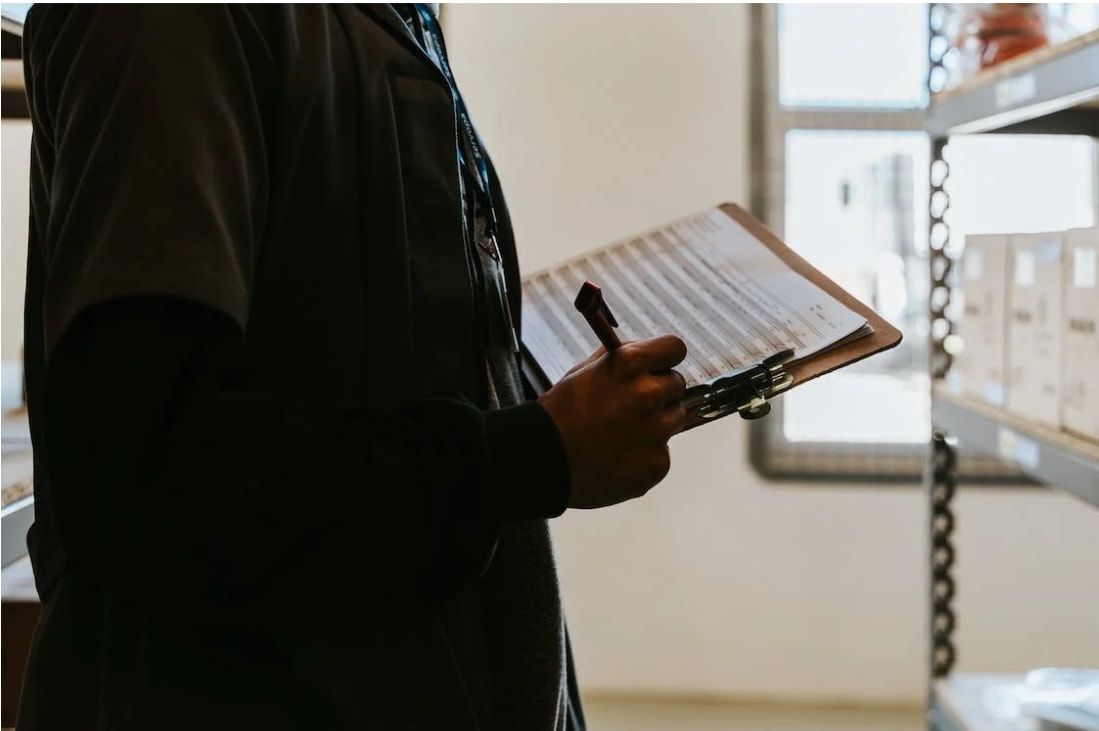
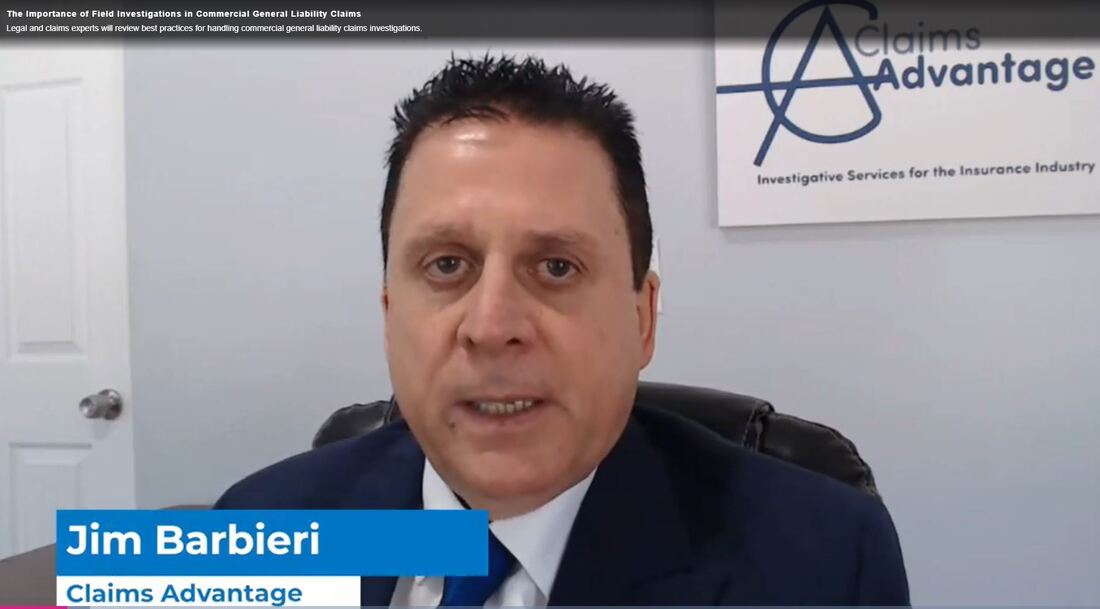
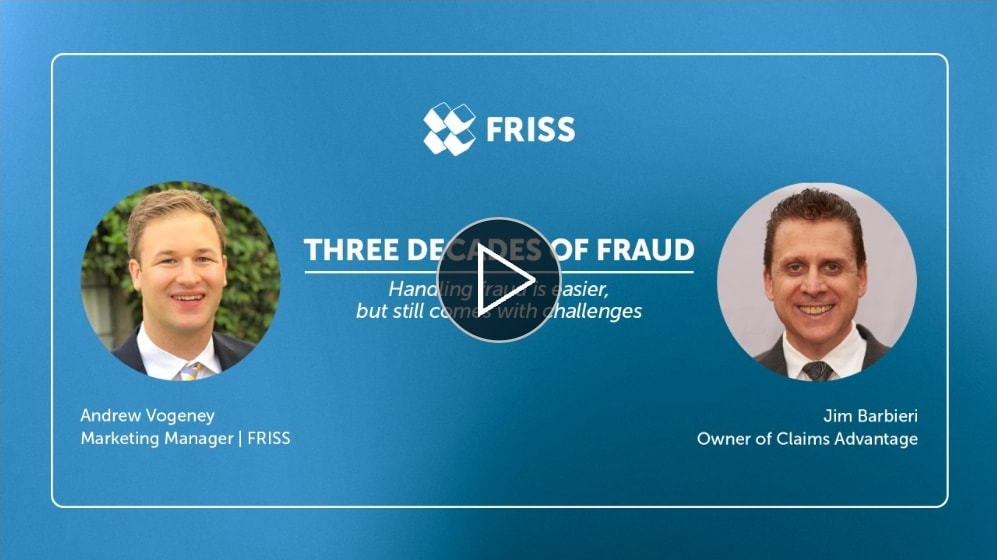
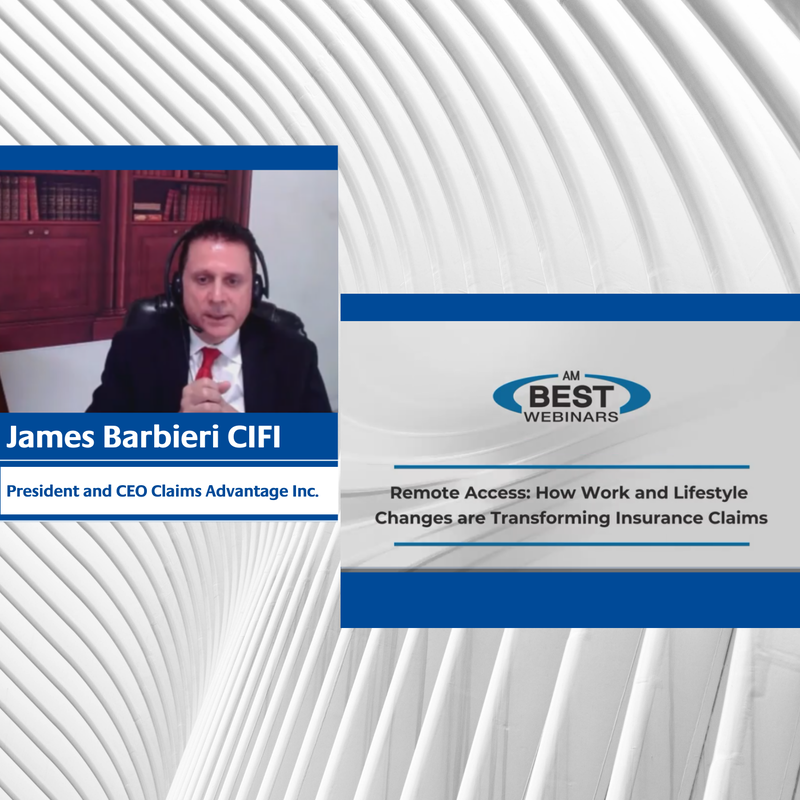
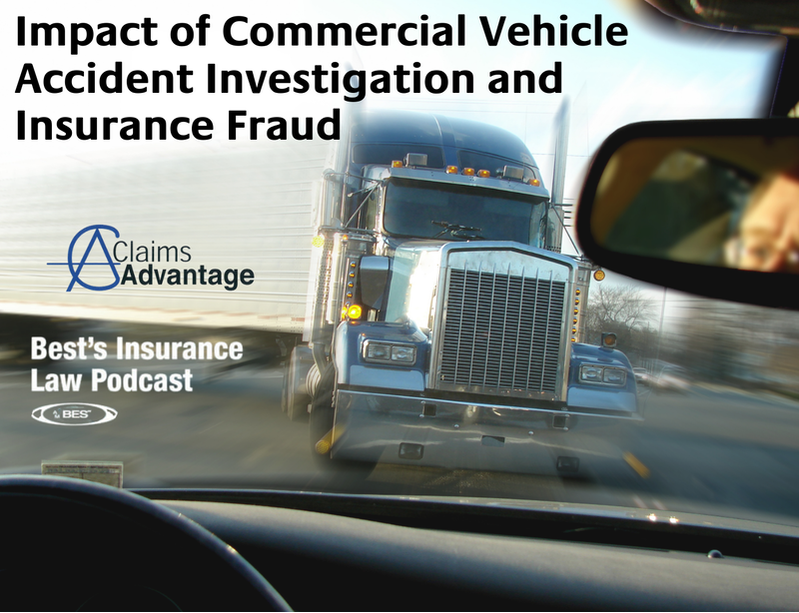
 RSS Feed
RSS Feed
